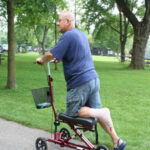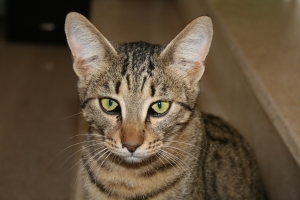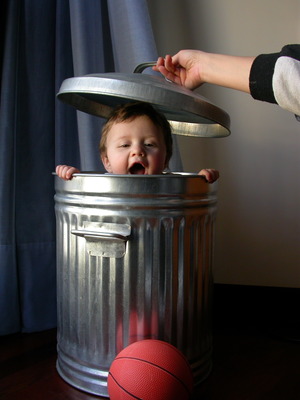When your baby starts to walk, they may position their feet strangely at first as an attempt to figure out this whole new balancing act. However, have you noticed your child consistently points one or both feet outward and it doesn’t seem to show any signs of improvement? If so, your little one may be experiencing what doctors call “out-toeing.”
When my daughter began pulling up on furniture to stand and cruising up and down the hallway with her push-walker, I noticed something different about her stride. Her left foot does fine, it points at a 12 o’clock position, she bends her knee, and picks up her foot. The right one is a whole different story. She keeps her right leg straight, her foot points at a 2 (sometimes 3!) o’clock position, and whenever she lifts it off the ground her foot arches and she swings it forward. Maybe she’ll do really good in ballet someday, but right now I’m concerned about her walking.
Out-toeing can mean nothing or it can be pretty serious. From the personal stories I have read and listened to, most children tend to fix the problem as they mature, and it’s usually completely resolved by 3 years old. This is because babies are exploring their new ability to balance on two feet and it can feel a little goofy to them, so they resort to standing in strange poses.
Sometimes the issue is a little bit more problematic. Out-toeing can be caused when the tibia or femur bone is twisted one way or the other. Poorly aligned bones can happen in-utero when your baby is cramped with little room to spare or it can also be caused by a genetic factor. If this the case, and depending on the severity, some doctors will take a “wait and see” approach while others will order a cast to be worn by your baby to realign the leg. Don’t worry, these casts don’t look like Forrest Gump’s anymore. They’re now molded plastic wraps that come in fun bright colors that can be easily hidden under socks and pants. Some babies need to wear them only during the day, but some children will need to wear it both day and night. As for the length of time, some children will need to wear them for three months and others will have to wear the cast for over a year. It all depends on how old your baby is and the severity of his case.
Between both in-toeing (standing pigeon-toed) and out-toeing, the most concerning scenario is when your baby walks with one (not both) foot pointed out, as is the case with my little one I described above. This can be an indicator of hip dysplasia. Treatments include leg braces, body braces or even surgery.
If you suspect your baby has an out-turned leg and foot, please contact your doctor as this could potentially be a serious issue. The earlier your little one gets the help he or she needs, the better the outcome and faster the recovery.






